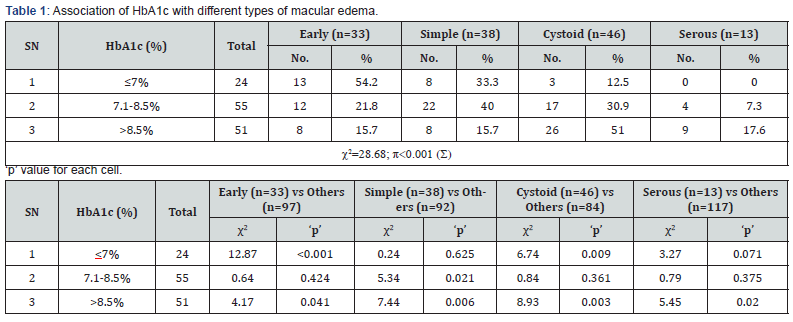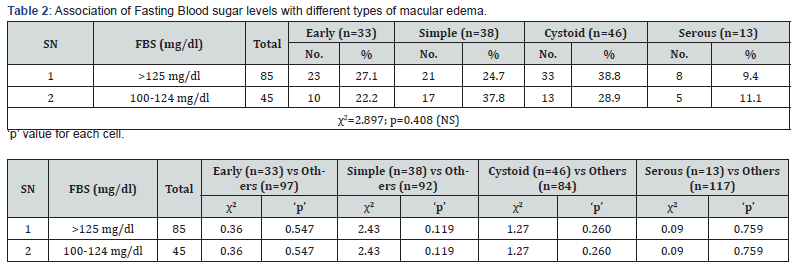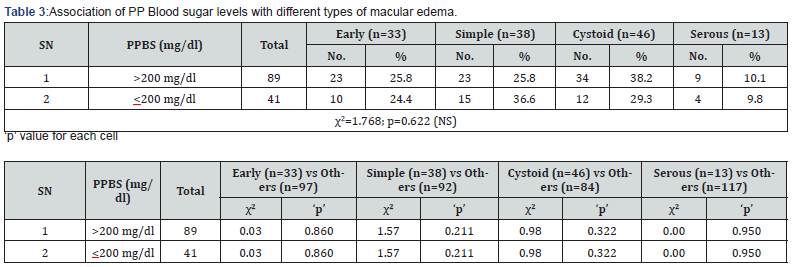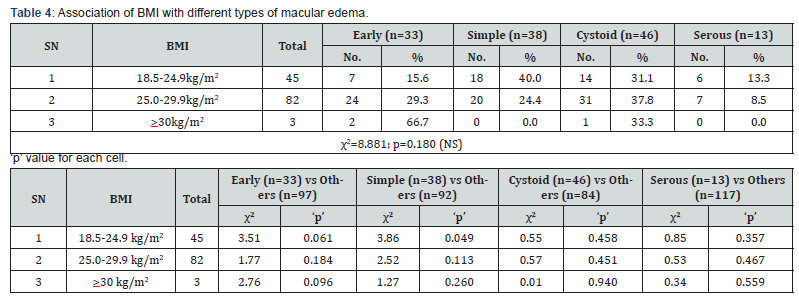Biostatistics and Biometrics - Juniper Publishers

A review of Articles the effect of student attention
and self-forced rewards mathematics special education. The review
implications of the strategies designed to promote intrinsic motivation
is presented mathematic educational. Each and every one subject are
indispensable for learner and educator, but mathematics teaching serves a
all-purpose reason of school to build up human beings psychologically,
in good physical shape and in the flesh It makes populace imaginative
and accountable. One part of the assemblage presents line of attack for
all students, and the other part contains strategies for students.
Aggravated students understanding school success because they display
behaviors such as choose challenging activities and spending more time
on task. Nowadays mathematic Educational can create a fundamental
revolution in education. This consists of a variety of tools that help
to provide learning materials and support the learning process to
achieve learning goals in mathematic Educational. Review believed that
from immemorial time, transfer knowledge; the rapid penetration of
information technology among people has changed their lifestyle
mathematic educational. The rapid evolutions from the application of
technology including productive and information technologies in human
life have brought about dramatic changes in industrial, economic,
political, and civil structures of societies and these changes have been
a significant impact on the life and work of people around the world
and seriously dealt with the traditional methods of teaching, learning
and educational. The use of rewards undermines intrinsic motivation and
results in the slower acquisition of skills and more errors in the
learning process.
Keywords: Mathematic educational; Fundamental revolution
Based on occurrence with mathematics at discipline,
student‟ build up wide-ranging attitude about its environment and value
and about their own ability and meditation in doing it [1]. Attitudes
and behaviors are repeatedly considered by means of self-report which
facilitate financially viable survey manner to be in employment on a
bulky weighing machine which hold that instructional method that are
extremely successful with greenhorn learners. Additional more students’
attitudes and behaviors have been established to be subjective by school
and classroom factor. Attitude seen as cognitive and effective
orientation or disposition towards an object, idea, person, and
situation [2].The absence of academic motivation and lack of interest is
also likely to be mathematicsstudents’ neglect of their studies.
Research over the last two decades has indicated that adolescents’
academic motivation declines over time. Recent learning show that as
children get older, their interests and attitudes toward school in
general and toward specific subject areas such as mathematics, art, and
science tend to deteriorate [3].Informally, interest is defined in
Collins Dictionary as “something that happiness you and attracts your
attention so that you want to learn or hear supplementary about it or
continue doing it.” Self-motivation can also be definedas the
“motivation arising from an individual’s internal desires for the
satisfaction and fulfillment of definite needs.
In recent times, the
ministry has premeditated and implement teaching subdivision expansion
program to make stronger human possessions development by preparation
knowledgeable and ground-breaking people with special attention to
engineering, technology and natural sciences, through introduce high
quality discipline and mathematics curricula at primary and less
important schools and the approve rule of the 70:30 university intake
ratios in goodwill of science & technology [4]. Consequently, my
understanding showed that most students in secondary schools think that
mathematics is difficult, and they lacked interest and personal
enthusiasm for mathematics. The review think upon these; can it be that
the mathematics instructors around these individuals are not good in
mathematics or that these mathematics instructors will not know how well
to guide their students in patience, so that the total impression made
by these mathematics instructors is deadening.The reviewer believes his
experience are the baseline for further studies to carry out a more
focused and comprehensive research and will use a very unique approach
by introducing variables that have not been examined by earlier
researchers; he investigates how math anxiety, its usefulness, the
condense of the student, and student inspiration affect their interest
in mathematics quantitative approach. The review will let somebody be on
familiar terms with the educational institutions on these variables in
the formation of students’ interest.
The purpose of this review interest and self-motivation make tote learning of mathematics education.
Review litterateurs
Motivation in Mathematics Education: High
student realization comes from students who are motivated from inside.
For that reason, instead of giving rewards, teachers need to
consistently teach students to become fundamentally motivated. Student
motivation affects every aspect of school life, from attendance, to
educational performance, to extra-curricular activities. Promoting the
maximum student motivation possible is extremely important for every
teacher especially in today's instructive climate, where schools are
continuously under pressure to improve test scores, responsibility[5].
And accountability. Students with learning disabilities face even
greater challenge each day as they walk into classrooms. Because these
students can struggle with the easiest of tasks presented by teachers,
students with learning can seem like the most unmotivated of all, going
to extremes not to show their weaknesses. As a result of these
pressures, teachers bombard students with the promise of rewards;
stickers for good behavior, treats for completing assignments, lunches
for turning in homework. Of all the rewards given, grades are the most
common reward [6]. There is a need to train teachers in how to teach
students so that they become intrinsically motivated, instead of just
propelled along by the vision of the next external reward. The key
factors are to create an autonomous classroom environment, and to teach
students to perceive themselves as decision makers. Teachers also need
to feel that they are in control of the material to be taught, how to
teach it, and how to teach the students to be in control of the content.
These strategies do not often appear in reading methods texts or math
books, although they are key issues in improving the achievement of all
students.
Students have been rewarded for good behavior for many years,
even before the development of Skinner's theory of operant conditioning.
In the 1800's New York City established a token economy as a means of
rewarding correct schoolwork and punishing school offenses [7]. In fact,
though, it was the theory of operant conditioning that leads to the
widespread use of rewards in the classroom. Basically stated, operant
conditioning means that if a reinforcer is delivered after a certain
behavior, then the behavior will be strengthened. A reinforcer is no
matter which given that will increase the chance of the behavior
happening again. In school, reinforcers usually are things like
stickers, praise, treats, and grades. While operant conditioning was
gaining in popularity, motivation theorists were changing their ideas.
Researchers were rejecting the idea that man is motivated by drives and
instincts alone, and accepting the idea that man is motivated by sources
both inside the body and outside in the world [8]. In the 1970'sEdward
Deci [9,10] defined the poles apart kinds of motivation as intrinsic
motivation and extrinsic motivation, intrinsic motivation is the act of
completing an activity for the pleasure of doing the activity itself. In
research conducted during the last 50 years, it has been established
that intrinsic and extrinsic motivations have different effects on
education. The presence of intrinsic motivation produces many behaviors
that result in school success like sustained interest in tasks, hazard
taking, and the conquering of new challenges [11-13].Children with
learning disabilities have even been shown to execute at levels higher
than what was expected by psychological tests [14]. External rewards,
however, tend to have negative effects in school.Different forms of
extrinsic motivation tends to take attention away from the most
important aspect of school, a child's learning. Rewards can undermine
intrinsic interest in an activity, and even deter a person from
returning to an activity later[8-10, 15]. In addition, rewards have been
shown to have detrimental effects on the process of learningfound that
rewards resulted in more[16].
A familiar subject matter in the research regarding
intrinsic motivation is the expansion of an autonomous classroom
climate. When children experience in control of their surroundings, they
are not only on the inside motivated to work, but also familiarity
positive feelings of self-worth [17]. It is also important to note that
even though a teacher may feel that the environment is autonomous, the
child may perceive it in a different way. A child's perception of the
environment should be taken into consideration when developing an
education plan (Adelman, 1989). Creating an environment where kids see
themselves as having control is one where they have some choices. Giving
children choices in their learning can be a very authoritative tool in
developing intrinsic motivation[12].Alfie Kohn [18] has not compulsory
many ways to give children choice in the classroom. With respect to
academic learning, children can make choices in what they learn simply
by choosing what trade book to read. Students make a decision how to
gain knowledge of by decide on what types of groups to work in, or where
they will work in the classroom.
Students can make choice in how well
they learn by helping to establish the criteria by which their material
will be graded. Finally, students need to engage in discussions about
why they become skilled at certain things in school. Kohn also points to
the significance of including children in deliberations about social
and behavioral issues in the classroom, such as rules and procedures.In
addition to Kohn, other researchers have stated the importance of
involving students in the decision manufacture process going on in the
classroom[12].Saw that giving small children a choice of materials for
an art project produced better art projects. Also, giving students
learning options, helping them to sample the options, and then decide on
a particular option deeply involve students in their own learning
process [11]. Not only have student made decisions about their
knowledge, but they have also experienced monitoring and evaluation
skills.
Student decision making not only helps in the
liberation of content information but can also be an important part of a
behavioral organization program.In addition to the classroom climate,
children require to receive instruction cover areas relevant to
intrinsic motivation. As a result of receiving personal causation
training, both teachers and students in grades 5,6, and 7 felt like they
had some control in their atmosphere, and students saw increases in
academic achievement [19]. After receiving training, teachers intended
classroom movements in self-concept, achievement motivation, realistic
goal setting, and the origin-pawn concept. Specific goals for the
students were to be able to determine goals for self, classify strengths
and weaknesses, determine the deed to take toward goals, and to tell if
the action is leading toward a goal.Stipek (1993) [20] recommend the
use of learning centers in the classroom to provide somewhere to stay
for the need for classroom conference, individualization of work, and
the chance for students to have choices. Even though learning centers
have conventionally been used with younger children, they can be used
effectively with students of all ages. Another way to structure the
classroom to promote intrinsic motivation is through the use of
interactive journals [20].At what time plunder are given, children don't
perceive themselves in control of learning, they approach and complete
tasks differently than when rewards are not prearranged, and their work
is judge as less creative[12,7,17]. Repeated failures in school cause
them to build barriers to protect themselves, and therefore they become
uninvolved in school [21]. Rewards, then, should be replaced with
teaching that is focused on the built-in incentive of the student. A
widespread goal should be to have the student’s attention be at the
center of their knowledge, not a reward. Students who are taught to
perceive themselves as causal agent in the classroom fit into place in
more risk-taking behavior and amplify their accomplishment [19]. Also,
students who make a distinction themselves as more in control of
learning have better self-esteem [17].
Teachers typically describe high-quality learner as
hardworking, interested, and motivated [13]. Motivation is a word heard
over and over again as crucial to a child's learning and is often heard
as being a major problem in schools today. Two types of motivation,
intrinsic and extrinsic incentive, have been documented by [9,10].
Decide scribes an intrinsically aggravated person as one who engages in a
hullabaloo for the activity itself; the reward being the activity. A
child who cleans his room for the purpose of displaying his baseball
card collection is said to be fundamentally motivated. Extrinsic
incentive occurs when a person completes an activity because it leads to
the acceptance of an outside reward. A child who is promised a journey
to the movies after cleaning his room is said to be extrinsically
motivated. While the majority of rewards given in school can be thought
of as extrinsic motivators, children learn the most when guided by
intrinsic enthusiasm.
Children who are intrinsically motivated display
number of behaviors that allow them to perform accordingly with their
academic abilities [13]. For example, children who are intrinsically
motivated become deeply involved in the task at hand and experience a
feeling of enjoyment [12]. And seek out challenges with the intention of
conquering them (Adelman and Taylor, 1990).According to DeCharms [19].An
intrinsically annoyed person feels that he can try to produce a change
in the environment and feels confident that the alter will occur.
Children seen demonstrating this individuality in the classroom would be
characterize as motivated, good students. Children with knowledge
disabilities also benefit from intrinsic inspiration. These children
tend to work longer and harder on tasks than extrinsically motivated
children with learning disabilities (Haywood, 1968), and have been open
to the elements to establish critical interior systems of self-reward
and mastery goals (Harter 1978). Children exhibiting high levels of
intrinsic motivation can achieve at levels that are higher than
predicted by psychological testing [14].
The field of study on motivation was also going away
through an assortment of changes beginning in the 1950's. Motivation
researchers and dissonance theorists began to reject Freud's
contemplation that man is motivated only by drives and instincts [8].
Sallow went on to explain that motivation is man's effort to change his
environment, and then feel satisfied when the desired alter occurs. This
opinion, along with recognition of intrinsic and extrinsic
encouragement lead to the completion of many investigate studies on the
effects of enthusiasm on concert[21]. As a result, the idea began to
materialize that extrinsic motivators may have a downbeat end item for
consumption on a person's internal motivation. Since many of the rewards
given in school are extrinsic motivators, school become the setting for
a large body of research. During the last 50 years researchers have
methodically investigated the effects of rewards on all aspects of
school[8].Establish that the imbursement of money to college students to
lie about enjoying a dull learning task did little to change the
student's opinion of the task. In the same way[9,10].Discovered that
money as a reward has detrimental effects on motivation.Intrinsically
motivated college students become less motivated when paid money as a
reward. On the other hand, when fundamentally aggravated students were
given praise as a reward, their motivation was enhanced. In addition, in
1972 Deci found that at what time a human being perceives a reward to
be more that what is warranted for a given situation, the person puts
forth supplementary effort in an activity.
The type and enormity of a
reward have an effect on motivation and arrangement.The timing o f a
reward also affects inspiration. In a study done at a nursery
school[15]. Assigned 51 children with a high interest in drawing to one
of three experimental conditions. One group of students agreed to
absolute a drawing activity for a reward of a certificate and star, one
group completed the drawing activity and then received a surprise
reward, and the third group completed the activity but acknowledged no
reward. The authors then studied the amount of time subjects spent with
the drawing supplies during free choice time. Lepper et al. found that
the subject who received no award or an unanticipated reward spent
significantly more time drawing than subjects in the expected award
condition.Rewards contracted for proceeding to an activity begins
appearing to chip away at interest in that activity later on, since
students in the unforeseen reward condition motionless spent substantial
time drawing during free time. In adding together to the type,
quantity, and time of a reward, researchers also studied the effect of
plunder on the procedure of knowledge.
All subject are necessary for learner and educator,
but mathematics instruction serve a universal principle of school to
enlarge person being emotionally, vigorous, and physically. It make
people creative and accountable [22]. Mathematics education enables
learner to congregate society difficulty for adequately qualified and
flexible or pliable occupation force. For some scientists’ethnos
mathematics meant to bring, classified in sequence of math (knowledge
and the mathematical practice of cultural assemblage of people) to
school. From time this issue has been confused with cultural or
indigenous mathematics [23]. In South Africa the idea of
ethnomathematics bring ethnic and impartial tension. Students’
background in the classroom causes inequalities. Whites claimed that
they have more ability to learn math than black because, new technology
is the result of their innovation. They accept that mathematic is a new
and foreign verbal communication to every single one student before they
go to school. Students on or after the beginning are one and the same
to learn this completely innovative knowledge which is called ethno
mathematics.Currently, the world is becoming more and more technical and
the study of science and mathematics is becoming highly valued.
Sustainable success in global economy demands workers with advanced
thinking, way of thinking and problem-solving skills [24]. The
percentage of women graduate with organic sciences degree has grown from
25% in 1960 to 62% in 2005, whereas only 21% of physical science
degrees were awarded to women in 2005. Overall, women comprise 24.8% of
computer and mathematical professional, down from 27% in 2006.
Experiences from developed countries and emerging
economies underscore that increasing the number of high schools,
college, and postgraduate students majoring in STME subjects is critical
for sustainable economic development. It is not uncommon to see most
STME graduates go into STME jobs and occupations that are among the
highest paid and fastest growing. Moreover, at the global level,
individuals with STME degrees who enter STME careers experience lower
unemployment rates compared to workers who enter other fields, which
means that STME workers enjoy greater job security. In other cases,
students who study STME can enter a variety of fields and earn a salary
premium, even when they pursue non-STME occupations. In turn, STME
education boosts countries’ competitive edge and innovative capacity,
both of which sustain economic growth (Japan International Cooperation
Agency [23,24].
The Ethiopian education system consists of two
cycles of primary education; two years of general secondary education;
followed by either a university preparatory program or technical
vocational education and training (TVET). Mathematics is offered
separately all the way from kindergarten through secondary school, and
science is given as environmental science (integrated form) in the first
cycle of primary (Grades 1 to 4). It is further offered as integrated
science in Grades 5 and 6 and separately as biology, chemistry, and
physics thereafter. Ethiopia offers early specialization, offering
courses in biology, chemistry, and physics starting from Grade 7.
Thereafter, students’ study STM and related subjects, including
physical, mathematical, and engineering science; life science and
health; teaching, business and economics; and other related fields
[23,24].In addition, recently the Ethiopian government placed special
emphasis on science, technology, engineering, and mathematics education.
One example of this is the setting of the target of a 70:30 enrolment
mix, where 70% of students enrolled should be in science and technology
and 30% in social sciences. In addition, the government has established
the Centre for Strengthening Mathematics and Science Education in
Ethiopia (CSMASEE) under the federal MoE, which is responsible for
science and mathematics education across the sector. Ethiopia’s
membership in SMASE-Africa, a regional association where African
countries exchange skills, experiences and issues in teacher education
in mathematics and science, which it joined in 2007, later evolved into
more collaboration between Ethiopia and the Japanese government, which
led to the launch of the CSMASEE(Japan International Cooperation Agency
[23,24].
Gender Differences in Achievements of Mathematics
Near the beginning findings show that girls be
inclined to have more unenthusiastic attitudes towards mathematics than
boys do, and those attitudes tend to become more unconstructive as
pupils moves from basic to secondary school [25]. The wide-ranging
attitude of the class towards mathematics associated to the pre-eminence
of tuition and social, psychosomatic weather of the class and to
increase encouraging attitudes needs individual effort and mathematics
nervousness can concentrate from end to last part systematic
destination. However, recent confirmation suggested that collaborative
approaches could promote positive attitude among students. Furthermore,
attitude actions require considerable cleansing[25].Distinguish two
elemental approaches to illustrate attitude towards math: First a simple
definition explain it as the degree of effect associated with
mathematics that is Attitude is the emotional disposition towards
mathematics. The after that was three constituent definition
distinguishes emotional reply, think and behaviors as constituent of
come within reach of [25].Report that mathematics self-assurance,
attitude towards mathematics, emotional Stacey found that students with
heartening attitude towards mathematics steps forward to more
authoritative behavioral and residential theoretical understanding.For
short term trends at fourth grade, 41 countries had similar data from
2011 that can be compared to 2015.
In mathematics, about half of these
countries (21) had higher standard achievement in 2015 than 2011, and
another 15 remained at 2011 levels. Only five countries had lower
achievement in 2015 [26]. Thorough importance on capacity development
that is gender sensitive. In some cases this involves capacity
development activities that appreciate the different needs and
capacities of men and women, while in other cases the emphasis is on
providing specific opportunities for women, in recognition of the
enormous participation and agency of women in global access to key
resources and services.Of the 36 countries participating in the science
part of the TIMSS 2007 at grade 4, significant gender differences
favoring boys were found in 8 countries; gender differences favoring
girls were found in 6. It is of special importance to note that the
advantage of boys in math, even at an early stage grade 4, is highly
correlated with advantage in science. Of the 8 countries, where
significant gender differences favoring boys were found among grade 4
science students, 7 were also in the 12-country list with significant
gender differences in mathematics. Of the 6 countries where girls scored
higher than boys in science in grade 4, 4 – Armenia, Qatar, Tunisia and
Kuwait – also had gender differences favoring girls among 4th graders
in mathematics (ibid).
In grade 8 significant gender differences favoring
boys were found in 8 countries [27]. Five of the 16 countries with
20-year trends raised mathematics achievement across their entire eighth
grade distribution, with increased percentages of students at all four
international benchmarks. Among the 16 countries, the number of
improving countries increased at each higher benchmark 5 at Low, 6 at
Intermediate, 8 at High, and 10 at highly developed [26]. A sexual
characteristics toolkit developed with partners has been taken up widely
to build this knowledge, and apply it directly in capacity development
activities, working closely with key partners. Gender compassion will be
built into the design of capacity development actions. For example, the
content and arrangement of farming recommendation provided through
advisory services will be adjusted to accommodate preferences of women
and of women within can be gender transformative by improving control of
resources and participation in decision-making. Current evidence will
be synthesized, and new knowledge and evidence will be generated to
inform investment, design, and implementation of these services
[26].Based on research from 1914 through 2011 that spanned more than 30
countries, the study found the differences in grades between girls and
boys were largest for language courses and smallest for math and
science. The female advantage in school performance in math and science
did not become apparent until junior or middle school, according to the
study, published in the APA journal Psychological Bulletin. The degree
of gender disparity in grades increased from elementary to middle school
but decreased between high school and college [28]. Similar to the
findingsour consequences put it to somebody that for in cooperation boys
and girls, math grades fall over the course of junior high and high
school [29]. The previous studies that focused on students’ science
administration from using 1998-1999 ECLS-K data, Kohlhaas and her
colleagues found that gender difference started as near the beginning as
in the third grade with male students having higher science average
mean scores than the female students. In fifth grade, male students
still had better performance in science than females [30].
In attendance are lots of factors that affect girl’s
math accomplishment in poles apart society. These factors can be
parents’ environment, and parental hold up, enlightening issue,
learners’ socioeconomic circumstance, and learners’ self-possession that
may have an effect on their expectation’s achievement in math.
Mathematics has been easier whispered than done area under conversation
for countless students to productively learn. Female students’
completion in math is a far and wide recognized as a national
awkwardness [31-37]. The comprehensive, information show sexual
characteristics differentiation in math accomplishment. Grade 4 science
important gender difference favoring girls were establish in the TIMSS
2007 in 10 countries 5 of which were Muslim: Algeria, Kazakhstan,
Kuwait, Qatar and Tunisia while Grade 8 science, significant sexual
characteristics differences favoringgirls were set up only in 4 country –
all Muslim: Bahrain, Kuwait, Qatar and Turkey[38-46]. In eighth grade
science, Singapore had the best presentation at the TIMSS
intercontinental benchmark, with 42 percent of students reaching the
Advanced Benchmark, followed by Chinese Taipei (27%) and Japan (24%). In
these countries, 86 percent or more reached the Intermediate Benchmark
[26].
In science, more than one-third of the countries (17
of 41) had advanced achievement in 2015, 16 remain at 2011 levels, and 8
had lower achievement in 2015. There were comparable levels of short
term improvement at eighth grade, with more than half the countries (18
out of 34) showing improvement in mathematics compare to 2011 and only 3
declining, and 15 out of 34 countries presentation enhancement in
science and only 4 declining [26]. In 2007, gender difference favoring
boys were found in 12 countries among 4 grade students in mathematics,
but only in 8 countries in the midst of 8 grade[26]. A to some degree
different picture was found in the science part of the TIMSS 2007: in 8
countries sexual characteristics differences favorboys were found in the
middle of 4 grade students; in grade 8 the number increased to [25]. It
is of special importance to note, that most countries where sexual
category difference favoring boys exist in grade 4 did not formulate
obvious to be able to close them in grade 8. what's more, in most cases
these gender differences became superior in grade[27].
Motivation is almost certainly the most significant
thing that educator can be objective to get better learning. Plentiful
irritated punitive conjectures have been postulated to explain
motivation. At the same time as each of these theories has several
genuineness, no on its own theory seems to sufficiently explain all
human motivation. The in sequence is that human beings in all-purpose
and students in scrupulous are multifaceted creature with multifaceted
requirements and desires. About student, very diminutive if any
sophistication can occur unless students are motivated on a consistent
basis. The explanation feature impacting student stimuli are: student,
teacher, content, method/process, and environment.From the examination
the subsequent findings were obtained. More than a few reviews had done
on relationship connecting students‟ attitude and students‟ show in
mathematics and these studies show there was constructive relationship
between the two. For this reason, students‟ attitude towards mathematics
is a chief issue that might heaviness the presentation of the
student.The inclination psychotherapy in mathematics and science based
on the literature and discussion made it is over and through with that
mathematics and science achievement score sex dissimilarity (for males
and females) was not get hold of for mathematics and discipline
achievement scores. The effect of sex in these variables appears to non
about mathematics and science achievement scores among students at
primary schools.About differences in mathematics and science achievement
score among students, due to location of the schools, the findings
obtained disclosed that student’s score were postponed significantly.
The difference between town and rustic schools was also important.














